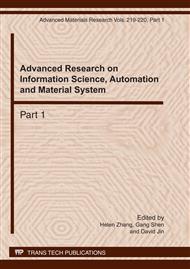p.633
p.638
p.643
p.648
p.652
p.656
p.660
p.665
p.670
Solving the Degree-Constrained Euclidean Steiner Minimal Tree Problem
Abstract:
The degree-constrained Euclidean Steiner minimal tree problem was discussed based on the Euclidean Steiner minimal tree with each original point being added with a degree constraint. The property of the problem was analyzed and the implementation process of solving the problem by using the simulated annealing algorithm and the ant algorithm was presented. Both algorithms are coded in Delphi and run on the Windows XP environment. Series of numerical examples were tested and the efficiency of these algorithms was validated.
Info:
Periodical:
Pages:
652-655
Citation:
Online since:
March 2011
Authors:
Keywords:
Price:
Сopyright:
© 2011 Trans Tech Publications Ltd. All Rights Reserved
Share:
Citation:


